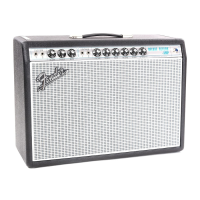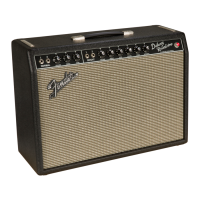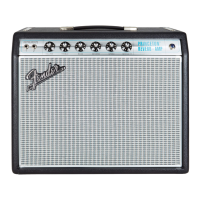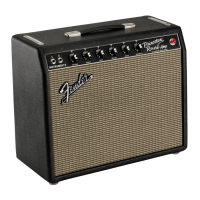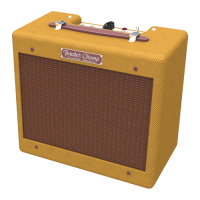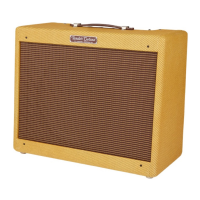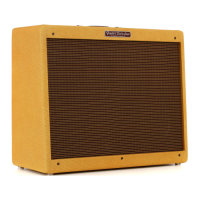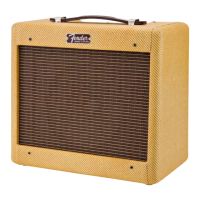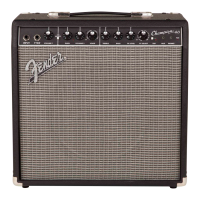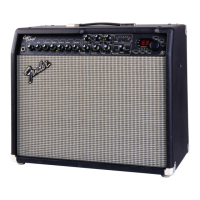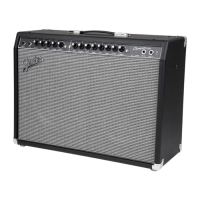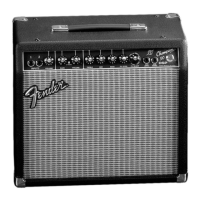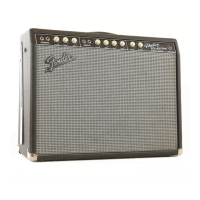
Do you have a question about the Fender Custom Vibrolux Reverb and is the answer not in the manual?
| power output | 40W R.M.S. minimum into 4Ω |
|---|---|
| power requirements (100VAC) | 270W |
| power requirements (120VAC) | 270W |
| power requirements (230VAC) | 270W |
| power requirements (240VAC) | 270W |
| output impedance | 4Ω |
|---|---|
| input impedance (input 1, both channels) | 1 MΩ |
| input impedance (input 2, both channels) | 136 kΩ |
| height | 49.2 cm |
|---|---|
| width | 63.5 cm |
| depth | 21.9 cm |
| weight | 21 kg |
Describes Fender's custom shop and the New Vintage series' aim to reduce cost while maintaining tone.
Traces the Vibrolux's history from the mid-1950s, noting its evolution and use as a recording amp.
Introduces the current model as a new amplifier with the sound and feel of past Fender amps, built by craftsmen.
Details the amp's medium power, vintage tube tone, all-tube reverb/vibrato, unique vibrato type, and Jensen speaker replicas.
A critical warning about not exposing the amplifier to rain or moisture to prevent fire or shock hazard.
Plug-in connections for instruments, with Input 1 offering 6 dB more gain than Input 2.
Adjusts the overall loudness of the Normal Channel.
Adjusts high-frequency boost or cut for the Normal Channel.
Adjusts low-frequency levels for the Normal Channel.
Plug-in connections for instruments, providing extra treble boost, especially at low volumes.
Adjusts the overall loudness of the Bright Channel.
Adjusts high-frequency boost or cut for the Bright Channel.
Adjusts low-frequency levels for the Bright Channel.
Adjusts the amount of reverberated signal. Turning control counter-clockwise turns REVERB off.
Adjusts the speed of the Vibrato feature.
A push-on, push-off switch to activate or deactivate the Vibrato feature.
A push-on, push-off switch to activate or deactivate the Reverb feature.
Protects the amplifier and operator. Replace with same type and rating to prevent hazards.
Turns the AC power ON and OFF for complete shutdown of the amplifier.
Turns amplifier on/off; standby warms filaments, reducing tube wear during short breaks.
Primary connection for speakers. Must always be used for speaker output.
Connects external speaker in parallel with main speaker. Requires main jack use.
Plug-in connection for the footswitch to control Vibrato and Reverb features.
